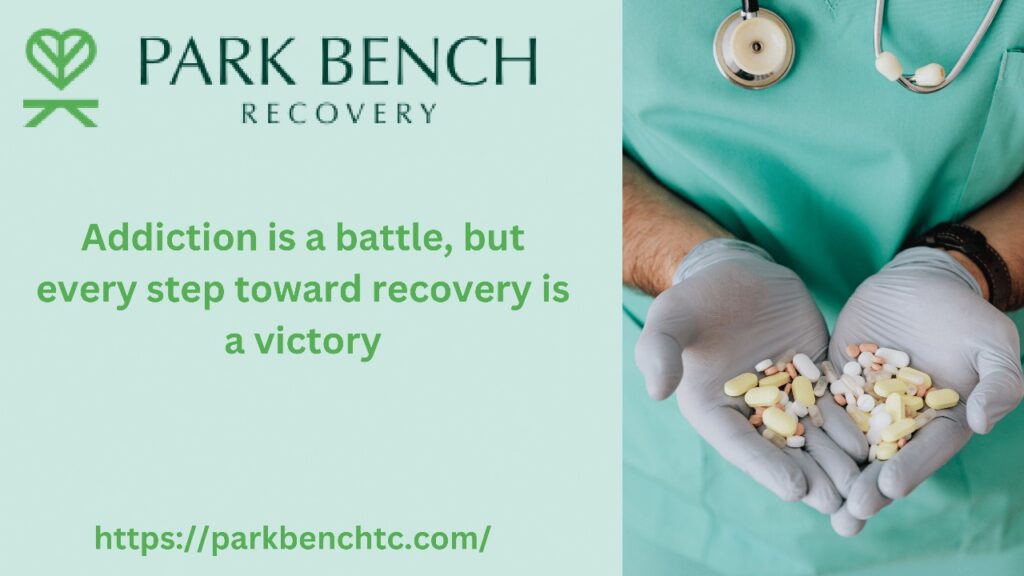Prescription drug addiction is a growing issue affecting millions of people worldwide. What starts as a legitimate need for medication can quickly spiral into dependency, leading to physical, emotional, and psychological consequences. Unlike other forms of addiction, prescription drug abuse often goes unnoticed because these medications are legal and prescribed by doctors. In this article, we will explore what prescription drug addiction is, how to recognize it, and the steps you can take toward recovery.

What is Prescription Drug Addiction?
Prescription drug addiction occurs when someone misuses or becomes dependent on medication prescribed by a healthcare professional. The most commonly abused prescription drugs include opioids (painkillers), benzodiazepines (anti-anxiety medications), stimulants (ADHD medications), and sedatives (sleep aids). While these medications can be helpful when used correctly, they also carry a high potential for addiction due to their ability to alter brain chemistry.
Why Does Prescription Drug Addiction Happen?
- Chronic Pain: People taking opioids for chronic pain may become dependent over time.
- Mental Health Issues: Anti-anxiety or sleep medications can lead to dependency when individuals use them as a coping mechanism.
- Tolerance and Withdrawal: Over time, the body builds a tolerance, requiring higher doses to achieve the same effect, leading to addiction.
- Social and Environmental Factors: Peer pressure, stress, and easy access to medications can contribute to misuse.
Signs and Symptoms
Recognizing the warning signs of prescription drug addiction can be challenging, especially when the medication is legally obtained. However, there are some key indicators to watch for:
- Physical Symptoms: Drowsiness, confusion, slurred speech, dizziness, nausea, and changes in appetite.
- Behavioral Changes: Frequent requests for prescription refills, doctor shopping (visiting multiple doctors to get prescriptions), or taking medication in larger doses than prescribed.
- Emotional Changes: Increased irritability, mood swings, anxiety, or depression.
- Social Withdrawal: Avoiding social interactions, neglecting responsibilities, and changes in work or school performance.
- Financial Issues: Spending excessive amounts of money on prescriptions or resorting to illegal means to obtain the drugs.
The Dangers of Prescription Drug Abuse
Prescription drug abuse is not just about dependency; it can lead to severe health risks, including:
- Overdose: Taking high doses increases the risk of overdose, which can be fatal, especially with opioids or sedatives.
- Physical Health Issues: Long-term abuse can damage organs such as the liver, kidneys, and heart, and can lead to respiratory problems.
- Mental Health Disorders: Addiction often coexists with mental health issues, such as anxiety, depression, or even psychosis.
- Risk of Developing Other Addictions: Prescription drug abuse can be a gateway to using other illicit drugs, worsening the addiction cycle.
Steps to Recovery
Recovery from prescription drug addiction is possible, but it requires commitment, support, and professional guidance. Here are some steps to begin the journey:
- Acknowledge the Problem: The first step is recognizing and accepting that you have a problem. This realization can be challenging but is crucial for moving forward.
- Seek Professional Help: Reach out to healthcare professionals, addiction counselors, or rehab centers specializing in prescription drug addiction. They can provide medical support, detoxification, and therapy.
- Consider Medication-Assisted Treatment (MAT): MAT involves using medications like methadone or buprenorphine to help reduce cravings and withdrawal symptoms, especially for opioid addiction.
- Engage in Therapy: Counseling, such as Cognitive Behavioral Therapy (CBT), can help address the root causes of addiction and develop healthier coping mechanisms.
- Build a Support System: Surround yourself with supportive friends, family, and peers who understand your struggles and can help you stay accountable.
- Join Support Groups: Support groups like Narcotics Anonymous (NA) offer a sense of community and shared experiences that can be incredibly motivating during recovery.
- Focus on Self-Care: Engage in activities that promote physical and mental well-being, such as exercise, mindfulness, and healthy eating.
The Importance of Support
Overcoming prescription drug addiction is not a journey that should be taken alone. Having a strong support system is vital for recovery. Family and friends can provide encouragement, understanding, and motivation, while professionals offer guidance and medical expertise. Support groups are also valuable, as they create a safe space to share experiences and learn from others who have faced similar challenges.
Prescription drug addiction is a serious but treatable condition. Recognizing the signs and taking proactive steps can make a significant difference in the recovery process. Whether you are struggling with addiction yourself or know someone who is, remember that help is available, and it is never too late to seek support. Recovery is a journey that requires time, effort, and dedication, but with the right guidance and a strong support network, it is possible to regain control of your life and move toward a healthier, drug-free future.
If you or someone you know is battling prescription drug addiction take that first step today – reach out, seek help, and start your journey toward recovery.